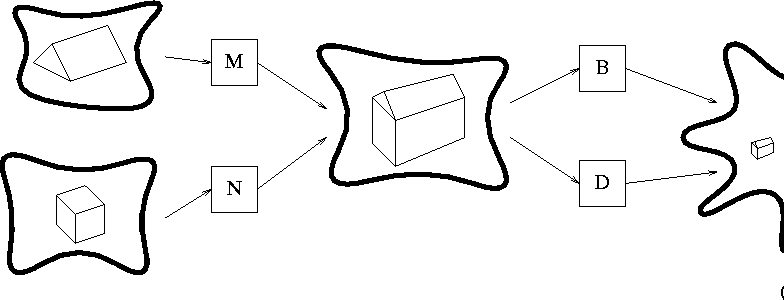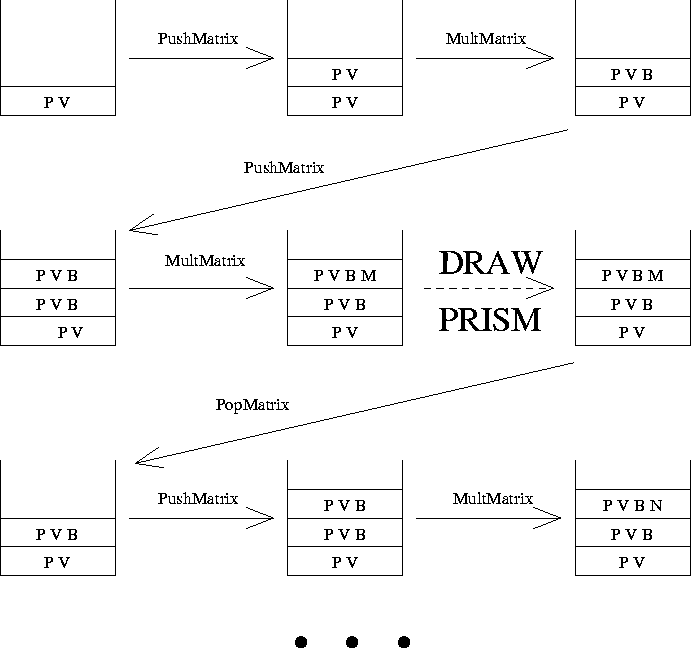- Describing everything as a single complex model is a Bad Idea.
- Use hierarchical modeling instead...
- Each is defined in a ``nice'' way in its own space.
- To put primitives together, use transformations.
- Each transformation embeds one space in another.
- Use a whole hierarchy of spaces to build up complex models...
- Not just one ``Model space'', but one for each model and part of a model.
 \
\
Procedure Scene()
House(B);
House(D);
end
Procedure House(E)
Prism(E o M);
Cube(E o N);
end
Procedure Cube(F)
. . .
end
Procedure Prism(F)
. . .
end
- Procedure calls are making depth first traversal of tree/DAG.
- Use a matrix stack--sometimes maintained in H/W.
- Each time we make an embedding,
- ``Push'' the new transformation onto the matrix stack
- ``Pop'' it on return.
- OpenGL's glPushMatrix call duplicates the top of the stack.
- OpenGL's glMultMatrix multiplies a matrix with the top of the stack, replacing the top of the stack with the result.
- OpenGL's glPopMatrix pops the stack.
- Stack starts with identity matrix on bottom.
- OpenGL also has transformation calls, such as glRotate, glScale, etc that perform basic transformations.
- These transformations operate on the top of the stack.
- Put perspective and world-to-view matrices into the stack.
- These are pushed on first, giving P V on the bottom.
- Might have more than one stack, i.e. MODEL, VIEW, and PROJECTION stacks.
 \
\
Code now looks like
Procedure Scene()
MultMatrix(P);
MultMatrix(V);
PushMatrix();
MultMatrix(B);
House();
PopMatrix();
PushMatrix();
MultMatrix(D);
House();
PopMatrix();
end
Procedure House()
PushMatrix();
MultMatrix(M);
Prism();
Popmatrix();
PushMatrix();
MultMatrix(N);
Cube();
Popmatrix();
end
Procedure Cube()
. . .
end
Procedure Prism()
. . .
end